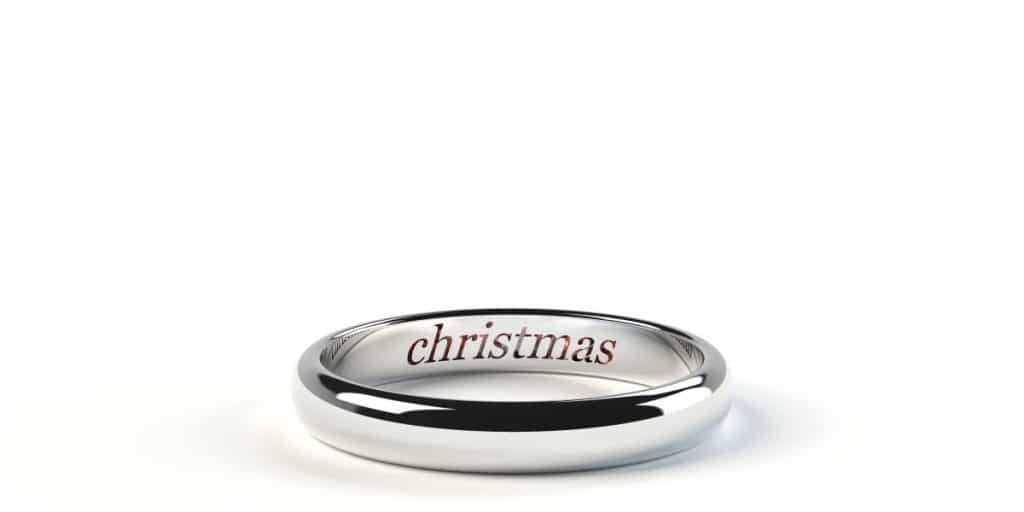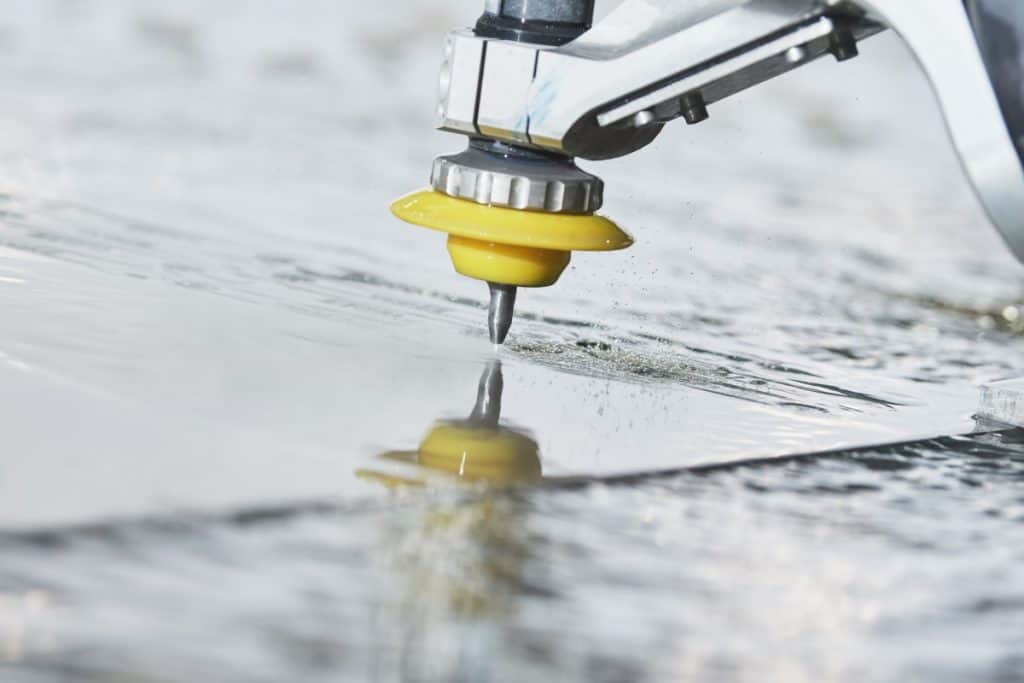
Have you ever wanted a saying or a significant date on your favorite piece of jewelry? Did you know that there are different methods for engraving jewelry, and each one is unique? Let’s run down the engraving options available to help you decide what’s best for your jewelry.
The most popular type of engraving used today is laser engraving, which makes pristine cuts and does not cause as much damage to the tools themselves as other methods may. These clean cuts make for easy read and beautifully personalized pieces of jewelry, from rings to necklaces and bracelets.
Although engraving machines can sometimes be costly and hard to use at first, engraved jewelry will always be popular. If you want your personalized jewelry to last a lifetime, engraving is indeed the best way to go. Engraved jewelry may be a bit more expensive, but it is definitely the best choice when you want a personalized piece that will withstand day to day life.
Engraving – a History
Engraving has been around for hundreds of years, dating all the way back to the early centuries of BC times. Engraving really started with cavemen, when they were engraving words, symbols, and pictures onto pottery and walls.
These pieces started to have meaning for them, and they often passed on the pieces of pottery to their family members as gifts or tributes. Throughout the years, engraving has been used to make pieces of artwork originals – ones that everyone wasn’t recreating or having in their possession.
People also engraved items to honor gods and rulers. Stone carvings, for the most part, have shown this to be true. People would engrave the stones with praise along with symbols of the gods they were honoring. These stones remained for a long period of time and were discovered by archaeologists on digs in ancient ruins.

The Scarab in Egypt was one of the most common symbols that was engraved. It was often worn as an amulet around the neck and was a symbol of the Egyptian afterlife. This carving was an oval and looked like an ornamental beetle. Religious and cultural symbology were highly common items in the past to engrave on jewelry, stones, or walls.
Gemstones were often carved for pharaohs and other wealthy people to show off how wealthy they are. Engraved pieces were often considered showy pieces, with the ability to show off the person’s power and wealth simply by having an engraved gemstone around their neck or finger.
Although engraving no longer symbolizes wealth, it is as popular as it was then, if not more so. Obviously, the techniques have come a long way, as we are no longer using simple tools to engrave metal, which could take hours to make correctly.
In the 1970s, the computer became more useful and standardized, and started being used in the engraving and design process. Granted, the technology was not what it is today, but it still made a big difference in engraving compared to what had been used by cavemen and early jewelers.
When we consider early engraving techniques, it is interesting to think about the fact that people often used chisel and hammer type tools to engrave objects with their personalized styles, especially since we now often use laser beams.
The Art of Engraving
Engraving, above all, is an art form. It is the method in which pieces of jewelry are cut out to make a design, spell a name, or write a date. Engraving takes an ordinary piece of jewelry and makes it something personalized and special, focusing on the person who will be wearing the piece.

This could range from engraving a bracelet with an inspirational quote to engraving the inside of a ring with an engagement or wedding date. Precise engravings can be achieved with the use of different engraving techniques and technologies.
The practice of engraving depends on the person who is doing the engraving. There are a few different methods of engraving that can be used, ranging from hand tools to electronic machines.
Some methods are better suited too small, precise work, whereas others are more suitable for larger, less “dainty” inscriptions or engravings. Which method is best will depend on what you want your engraving to look like, as well as what material the engraving is going to be on.
Engravable Materials

Most materials are engravable, including metals, gems, plastic, leather, stones, and glass. Metal is a frequently used material, and can range from silver to gold to tungsten, and everything else in between. These are often charms, pendants, bracelets, and rings.
Metal can be engraved using any method of engraving, as it is a sturdy material and won’t be damaged beyond the engraving. This includes smaller engravings on items such as watch bands or the back of a watch. Gemstones are often engraved with designs to make the colors of the gemstones become more apparent and vibrant.
Here are just a few different types of engravable materials:
- Metal Business Cards Blanks
- Colored Acrylic Sheet Plastic Sheet
- Blank Aluminum Pet ID Tag
- Round Metal Stamping Blank and Charms
- Bracelet Blanks Stainless Steel
Some engraving methods work better on certain materials than they do on others. This has to do with the strength or fragility of the material itself versus the force of the engraving method. You don’t want to be in the middle of engraving a rare gemstone only to have it break under the pressure of the engraving method.
Traditional rotary engraving is not suggested when engraving glass, gems, stones, or plastic. This is because the rotary tool uses pressure to engrave materials and could easily break the material or fracture pieces off of it.
Laser engraving machines are the best choice when it comes to a variety of materials, as there is no risk of pressure breaking the material itself, and thus, you get a more pristine looking engraving on your jewelry.
Laser Engraving
With laser engraving, laser beams are used to cut the surface to make a permanent mark. These machines are often highly modern and require a fairly advanced computer setup in order for them to work properly and create the design you desire.
Laser engraving is a quick process, which helps make it a more feasible option. The quickness and durability of the engraving help make this process more seamless.
Laser engraving machines are fairly compact and can fit easily on a table in an office or crafting area and won’t be cumbersome. The last thing you want when working with engraving is for the machine to be so big and bulky that you cannot maneuver it easily.
Laser engraving is definitely the top choice for modern-day engraving technologies, as it is precise enough to do small, minute engraving without diminishing the quality of the engraving itself. With lasers, you’re able to have small engravings on the inside and outside of rings or even on earrings.

Almost anything can be personalized using a laser engraving machine. The nice part about a laser engraving machine is that the laser beam can be whatever diameter you need it to be for the engraving, and you don’t have to worry about the size of an extra bit or jig.
Having the ability to be this precise in the design and cutting of the material helps to make the piece more pristine and oftentimes, dare I say, perfect for the person wearing it.
There are three main types of laser technology that are used to engrave jewelry. The CO2/Helium laser engraving machine uses gas-based lasers, and they were the first type of laser machine to really hit the market. They are still used today, even with the evolution of later technologies that are available now.
Crystal laser engraving machines use crystals in order to produce the intended laser to be used. These, again, are common, but not as common as the fiber laser engraving machines. These machines are the latest technology on the market. These types of machines yield faster, more pristine results, regardless of the material used.
These lasers are a bit different than the others, as they use optical fibers that have actually been coated in ytterbium, which is a rare elemental. Basically, this makes the laser beam stronger, more effective, and much more efficient than the other laser technologies available.
There is a wide variety of laser engraving machines available, even on Amazon. A few of the higher-rated ones I found are:
- Mini desktop laser engraver machine
- Orion Motor Tech 60W 110V CO2 Laser Engraving Machine
- Glowforge Plus 3D Laser Printer
Although laser technologies sound intimidating at first, they are actually easier to use than methods with tools. This is because the majority of the work is done by the computer system attached to the laser beam, and it can focus precisely on the piece of jewelry and cut it without effort on your part.
Laser engraved pieces often look almost etched, to where the metal or other material is scratched into a design, and all of the cuts become the design, pattern, or quote that you want it to be.
Rotary Engraving
Rotary engraving utilizes hand rotary tools to make engravings on materials, especially metal. The tools have bits that cause damage to the surface of the metal and create an imprint to make the design that is wanted. The biggest drawback of using a rotary tool is that the bits have to be replaced when they are worn out, and the engraving can only be as thin as the bit is.
Thus, if you want a very small engraving, you either need a very thin bit (which aren’t always easy to use), or use a different engraving method that will be more precise. Another issue with rotary engraving is that it can mainly only be used on metal, as the pressure of the tool could potentially fracture other materials, such as glass, plastic, or gemstones.
Rotary engraving is obviously not as modern as other methods, but is still used by many jewelers who prefer to use hand tools than technology and/or machines.
Mechanical Engraving
Mechanical engraving machines are less modern than laser machines, and they utilize different types of jigs and tools that will help engrave all types of items, including the inside and outside of rings, charms, and bracelets. Mechanical engraving is primarily an automatic version of a rotary engraving machine.
Most mechanical engraving machines are not only easy to use, but also compact. They can easily be set up on a desk in a crafting or office space. They often use Bluetooth capabilities to help you design your engraving and then go into the next steps.

Bluetooth capabilities allow you to maneuver the machine to cut your engraving, making for more precise, beautiful cuts, and the software capabilities of this machine allow for increased design capabilities as well. Think of a charm that you want a paw print engraved on.
The capabilities of this machine will allow you to not only design the paw, but also cut into the material, making for a permanently personalized piece.
Cost of Engraving
When considering having jewelry engraved, you have to consider how the jeweler is going to engrave it. Will they sue a hand rotary tool or a laser engraving machine? How small and precise is your design, and what do you want it to look like? How the piece is engraved may also have an impact on how much the engraving actually costs.
The other option, aside from taking it to someone who engraves jewelry, is to purchase an engraving machine for yourself. This would be an investment, but one that could easily lend itself to a money-making opportunity, depending on how often people ask for their pieces to be engraved.
Since the mechanical and rotary engraving have parts involved that must be replaced regularly and take more time, engraving using these methods is often more expensive. However, since laser beams don’t just “get replaced” (now THAT would be a sight to see! I do wonder where they’d sell replacement laser beams, but I digress), it’s a much more cost-efficient method for engraving.
The initial cost may be higher only because of the computer software and system setup, but overall, it is ultimately the cheaper option. This, however, does not often impact the overall cost of the engraving on the jewelry because there is a smaller amount of labor involved using this method. Other engraving options may be more costly because of the labor that goes into the engraving itself – it all depends on how the engraver does the work.
What can be Engraved?
From rings to bracelets to gems, many things can be engraved, depending on what you want to be engraved on the piece. Quotes and sayings are often limited to 1-16 characters, depending on the size of the jewelry. Rings often have a smaller amount of room available, so thus, they have less space for an inscription.
An engraving does not have to be words or dates. You may want an image such as a portrait or symbol engraved on a piece of jewelry instead. Laser engraving, again, is the easiest way to create these pieces, since it is more advanced and precise than other methods. This way, you’ll have details that you may otherwise miss using a different engraving method.
Did You Know?
- Engravings on rings are broken into 2 types – inscriptions on the inside of the ring or decorative designs on the outside of the ring.
- The first “jewelry” to be made was made from elephant tusks, which could easily be engraved using early tools
- Lasers in laser engraving machines only heat the surfaces they are aimed at, and do not produce heat on their own. (This surprised me. Did you know this one??)
- Laser engraving costs less, takes less time, and leaves the material with a flawless design that will last a lifetime.
- There are no toxic chemicals used with laser engraving, which means there is no residue left behind when using laser engraving.
- Engraving also became an important tool for jewelers because they were then able to mark their items with serial numbers. This has helped to track thefts or damages to jewelry.
Wrapping It All Up
Overall, if you want something engraved, either done on your own or by a professional, your best option is to find a laser engraving machine. This way, you not only have a pristine piece of personalized jewelry, but you have one that will be engraved for a lifetime. This durable, flexible method will help create the pieces you want for yourself or others and will make a statement whenever you wear them.
Engraving is, by no means, a new technology or art form. Engraving has been around for thousands of years and is just one way in which people can make unique, one of a kind items that have personal meaning behind them. The symbolic meaning behind engraved pieces of jewelry is often more important than the cost of the jewelry itself, which makes engraving a powerful art form.
The increased use of technology related to engraving makes the practice more feasible, cost-effective, and efficient. Technology has grown in the engraving world, and continues to advance to be more user friendly and widespread. Engraving will always be a popular option for jewelry, especially when it comes to personalization, gifting, and tributes to people or pets.
Be sure to check out some other nifty functional craft ideas through our other posts here on Craft-ILY as well as checking out some videos on DIY and How To’s over on YouTube. Look for “Crafting Unedited” to see!

I value the blog.Really thank you! Really Cool.